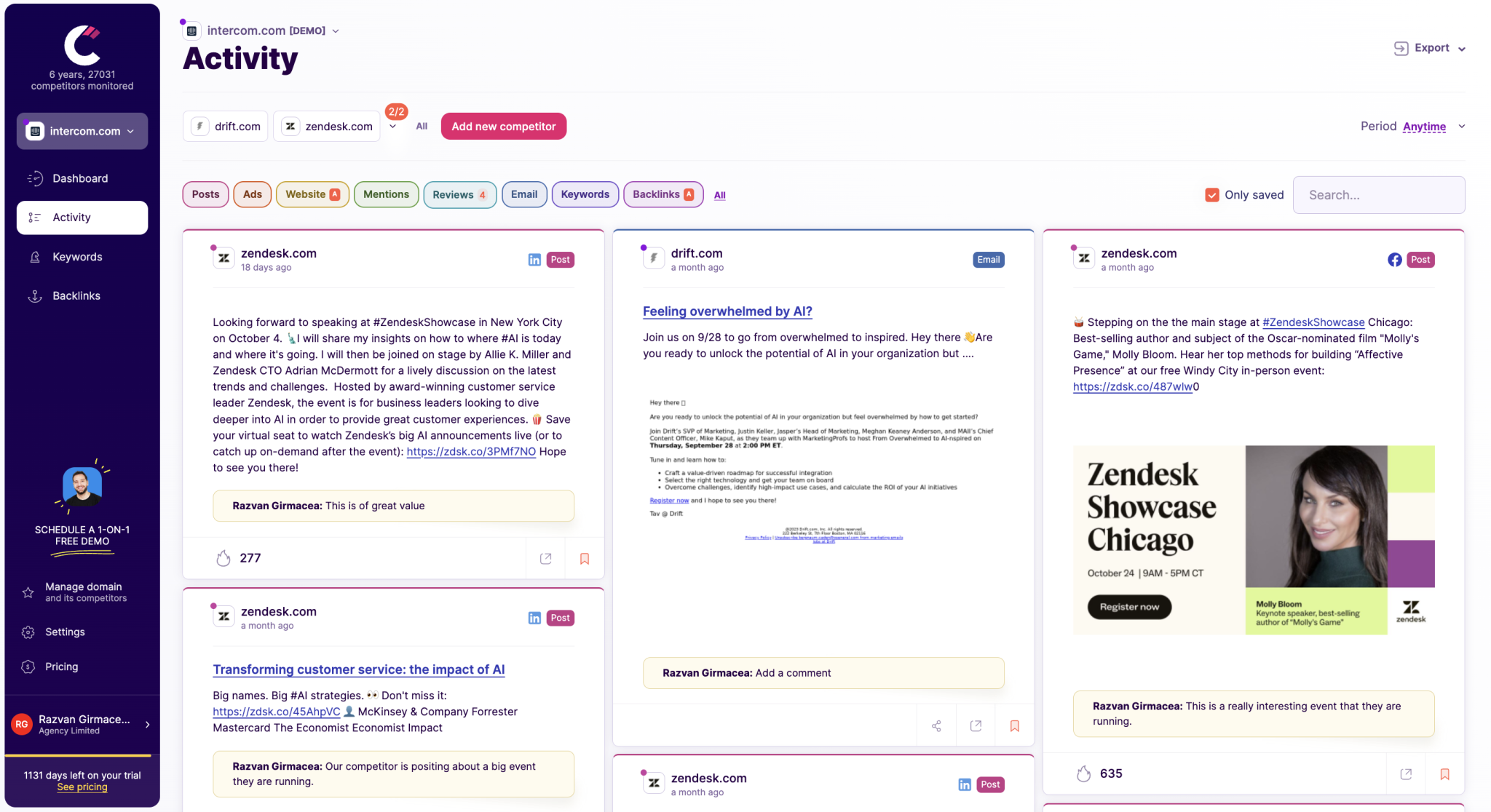22+ Free Competitive Analysis Templates (With Example Data)
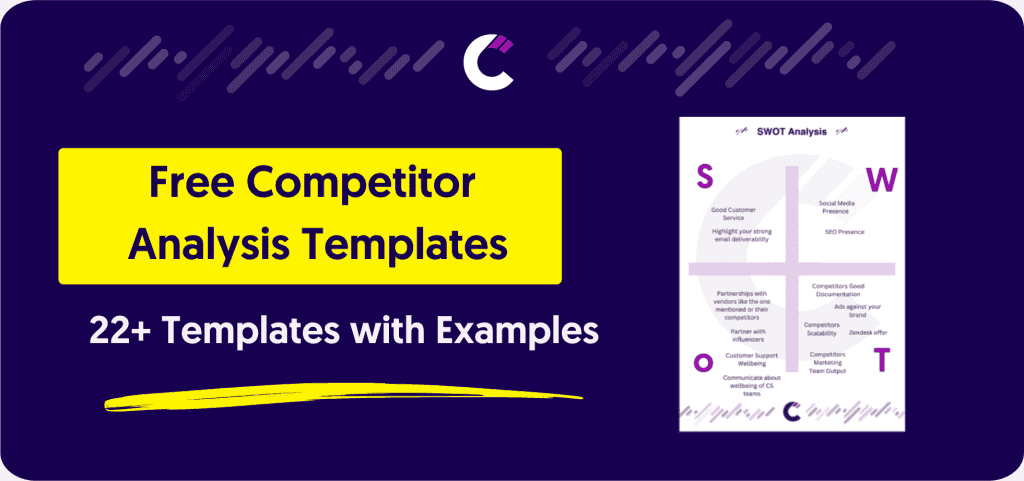
A competitive analysis template helps you systematically evaluate competitors’ strengths, weaknesses, opportunities, and threats. These templates simplify the process, offering structured formats to gather and analyze data, giving you a competitive edge. This article will provide 15+ free competitor analysis templates, complete with example data, to help you outperform your competition. Download these templates and start optimizing your strategy today.
Download our Competitor Analysis Powerpoint with 22+ Competitor Analysis Templates
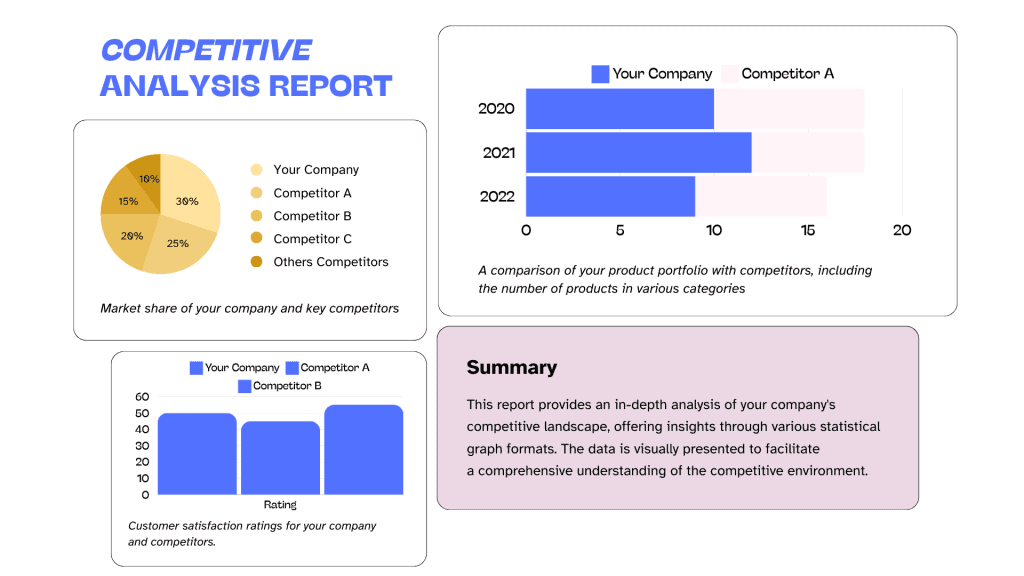
What is Competitive Analysis?
Competitive analysis involves evaluating your competitors to understand their strategies, strengths, and weaknesses. This process helps businesses identify market gaps, opportunities, and potential threats. By systematically analyzing competitors, companies can make informed decisions, improve their strategies, and achieve a competitive advantage. Whether you’re a startup or an established business, a thorough competitive analysis is essential for success.
What is a Competitive Analysis Template?
A competitive analysis template is your blueprint for dissecting and understanding the competitive landscape. It’s a structured framework that guides you through the process of evaluating your competitors, their strategies, and their performance in the market. Think of it as your toolkit for collecting and organizing vital data about your rivals, allowing you to draw meaningful insights. But what sets a good competitive analysis template apart from the rest, and why is it essential? Let’s delve into these questions to uncover the significance and effectiveness of these templates in the competitive business world.
22+ Free Competitor analysis templates (With Example Data)
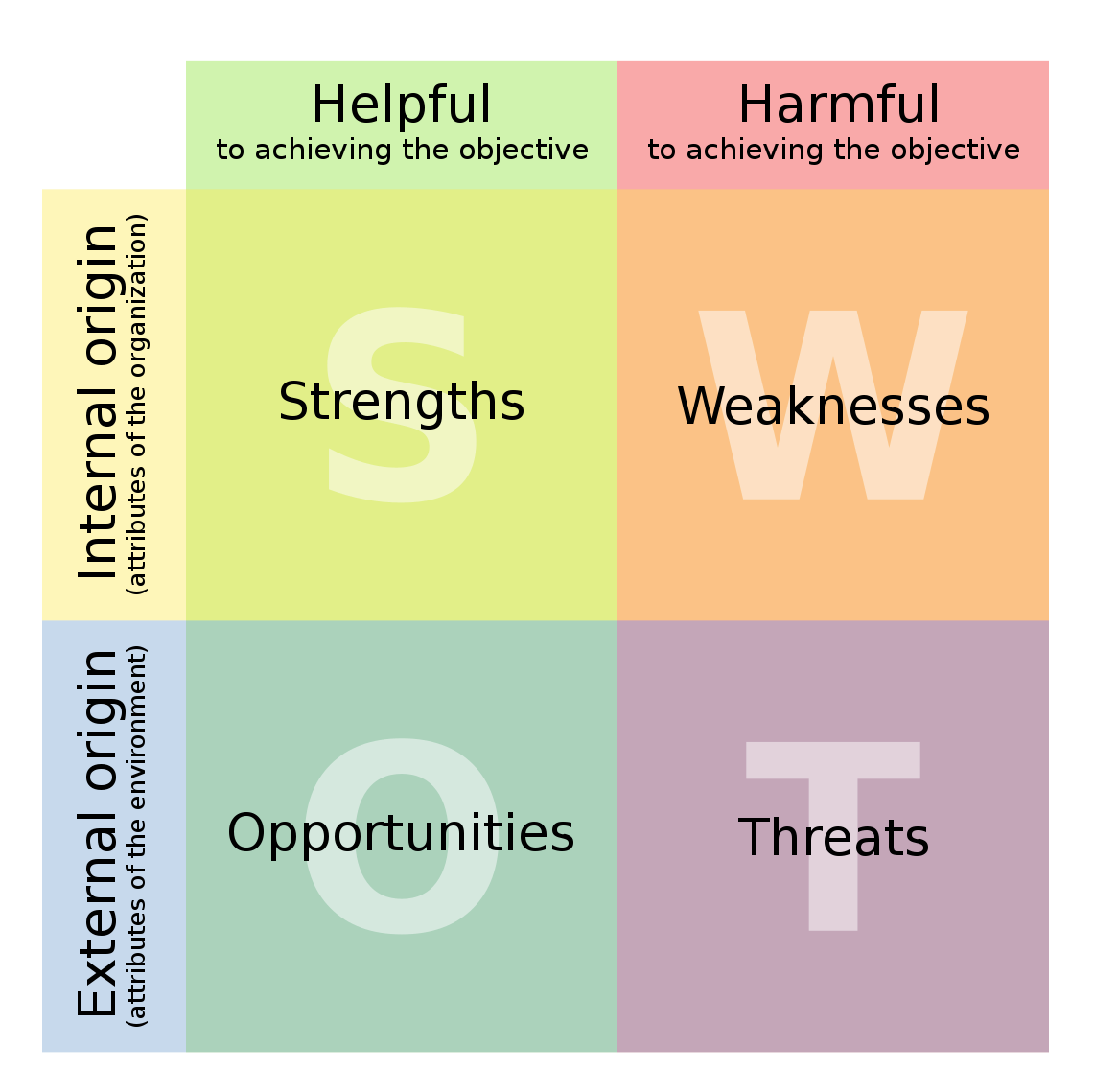
SWOT Analysis Template
Provides a comprehensive overview of your competitors, including their strengths, weaknesses, opportunities, and threats (SWOT analysis). Use it for a broad view of your competitive landscape.
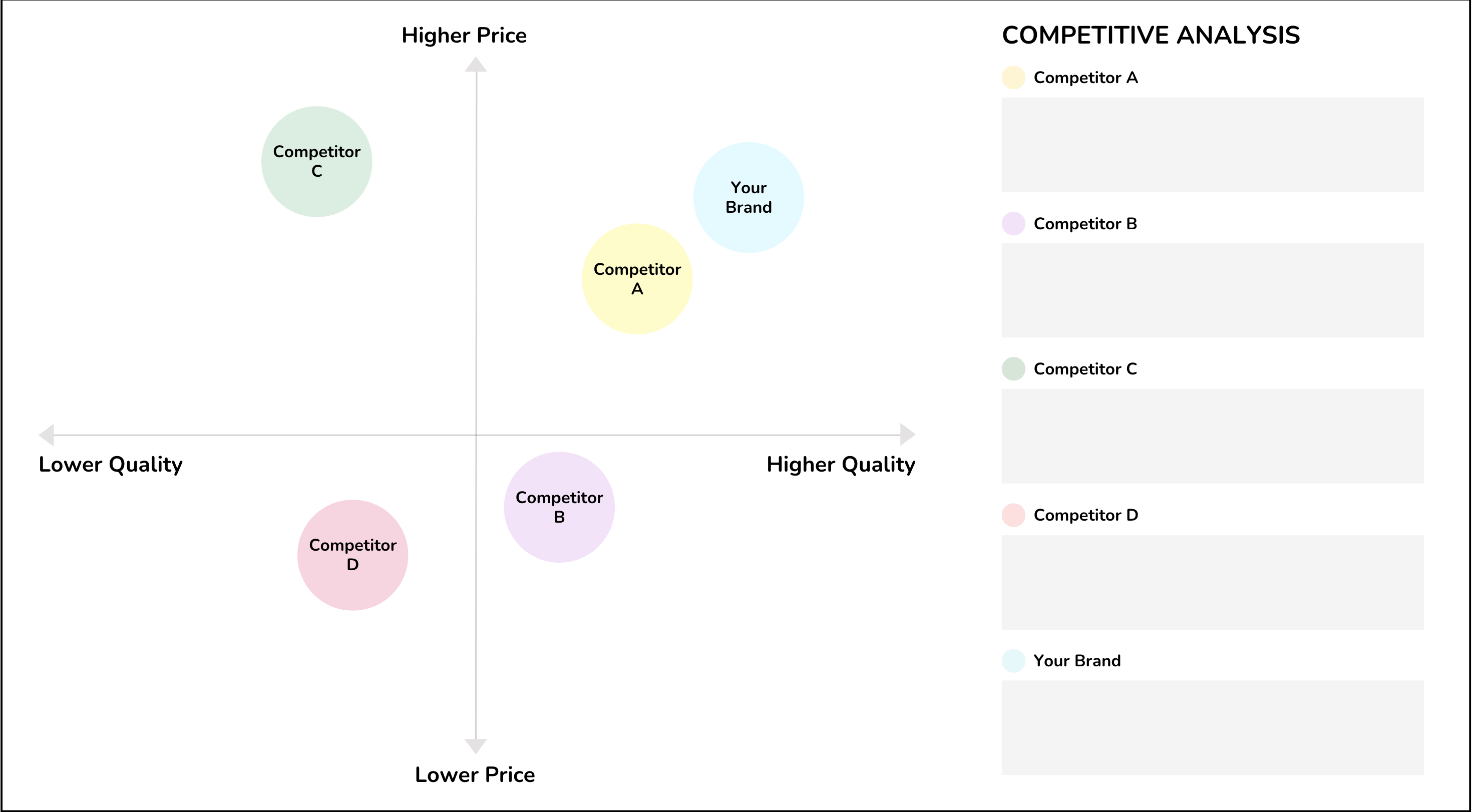
Competitive Landscape Analysis Template
Helps you visualize the competitive landscape with a focus on market share, positioning, and key players. Use it to understand where your business stands in relation to competitors. You may change the X Y axis as you deem fit.
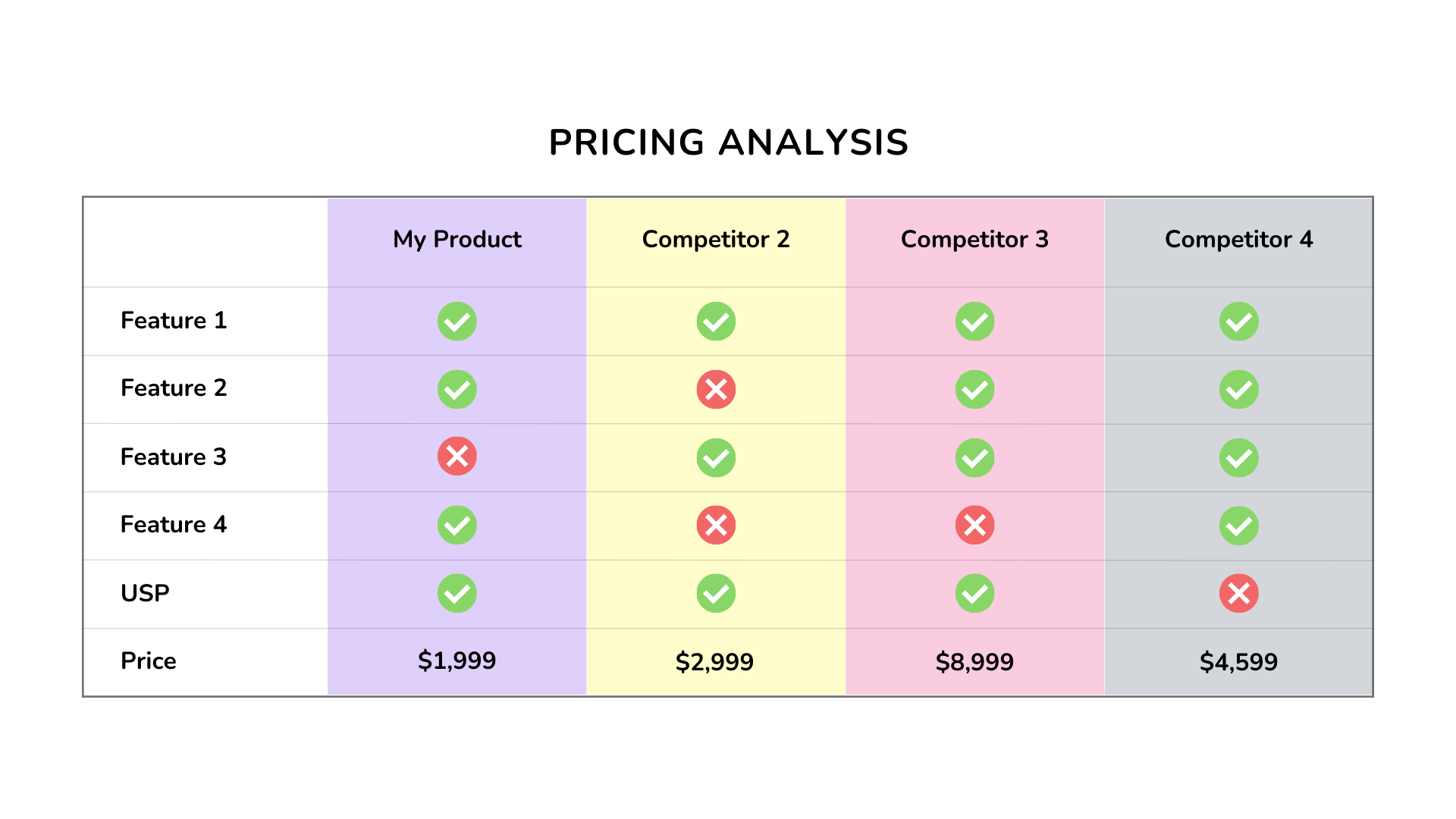
Competitor Pricing Analysis Template
Analyzes the pricing strategies of your competitors, helping you determine your pricing approach. Use it to adjust your pricing strategy or assess price competitiveness.

Competitor Profile Template
Creates detailed profiles of your competitors, including company information, product details, and market presence. Use it for an in-depth analysis of specific competitors.
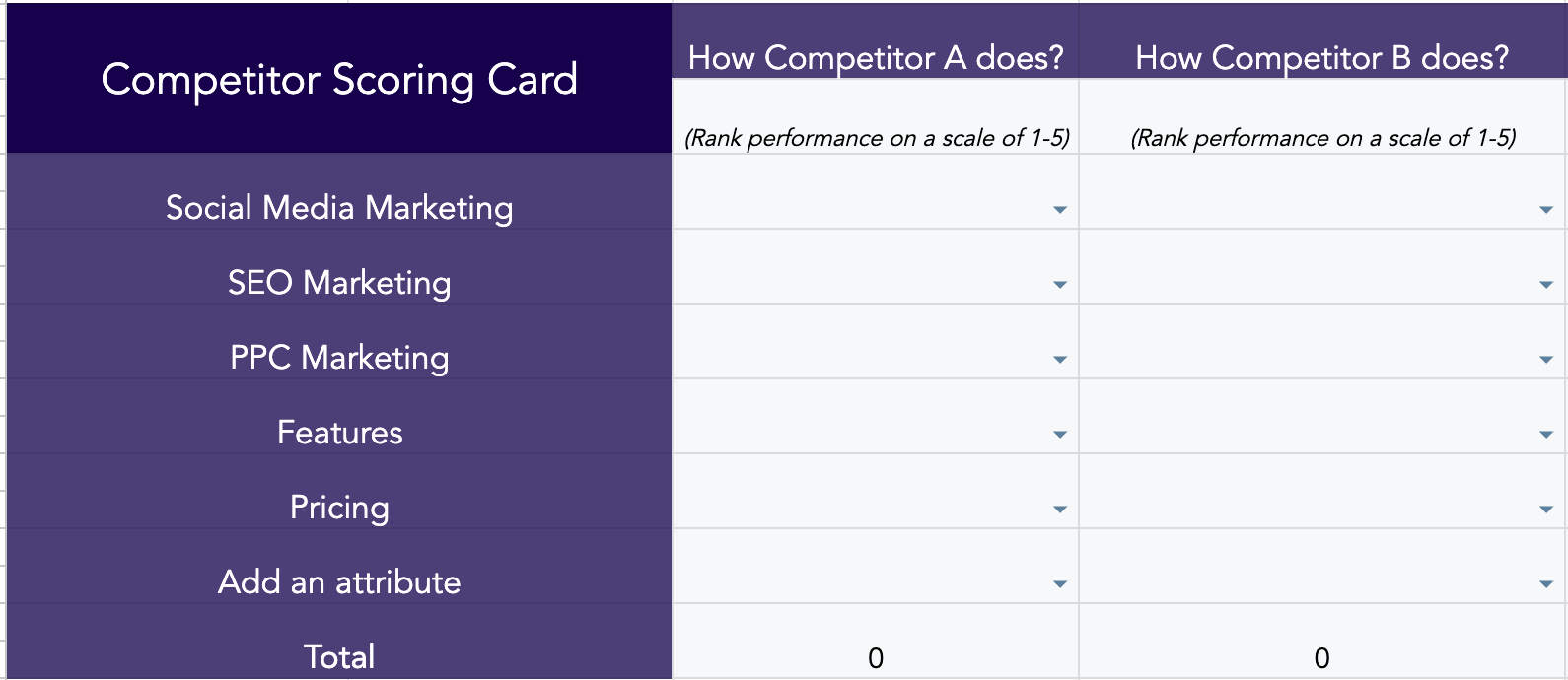
Competitor Scorecard Template
Develops scorecards to rank your competitors based on various performance metrics. Use it to compare and prioritize competitors.
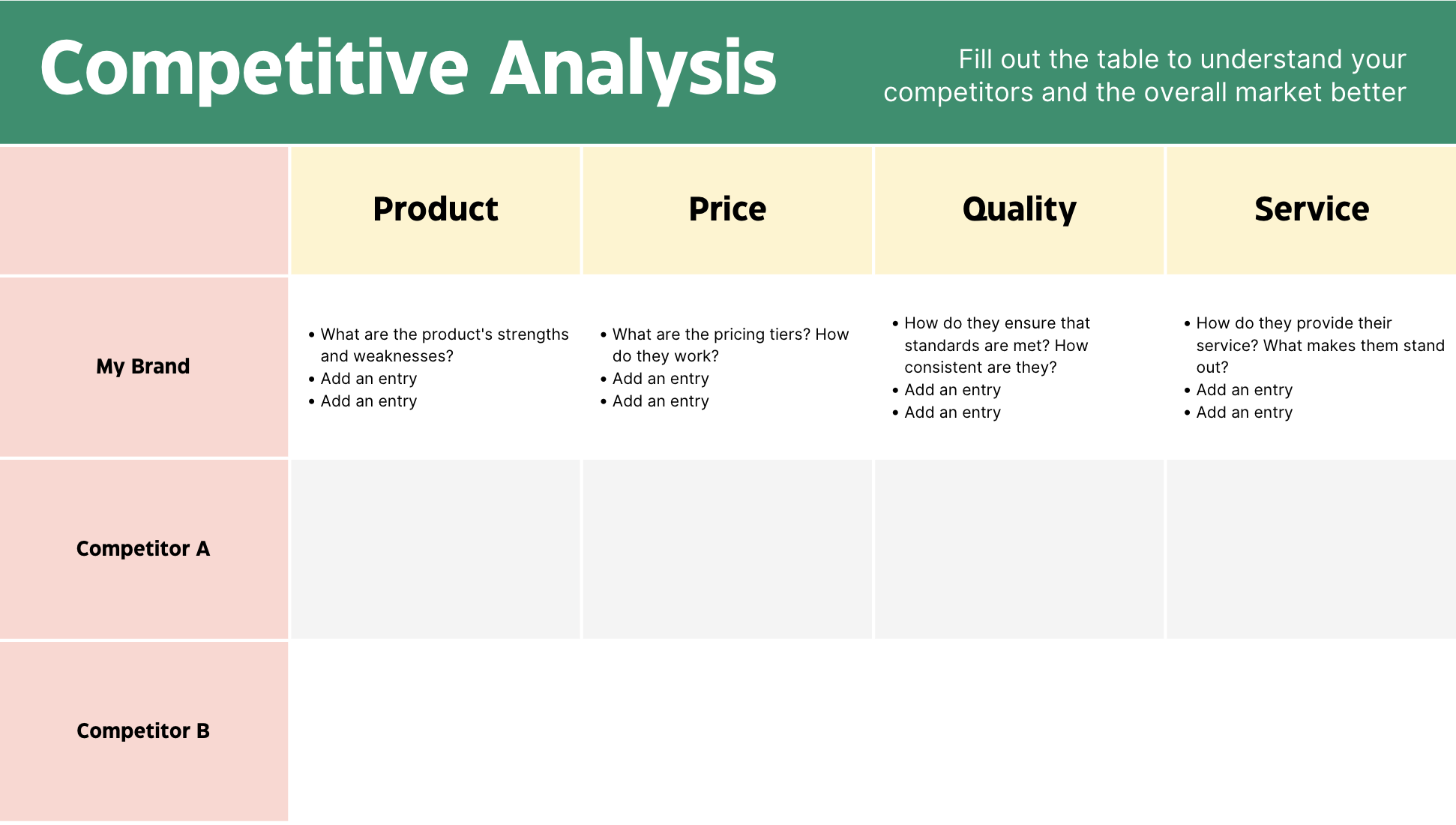
Competitor Overview Template
Provides a concise overview of each competitor's key attributes, making it easy to compare them. Use it for quick reference to competitor insights.

Capabilities Analysis Template (VRIO Framework)
Assesses the capabilities and resources of your competitors, including technology, human capital, and infrastructure. Use it to understand the resources your competitors can leverage.
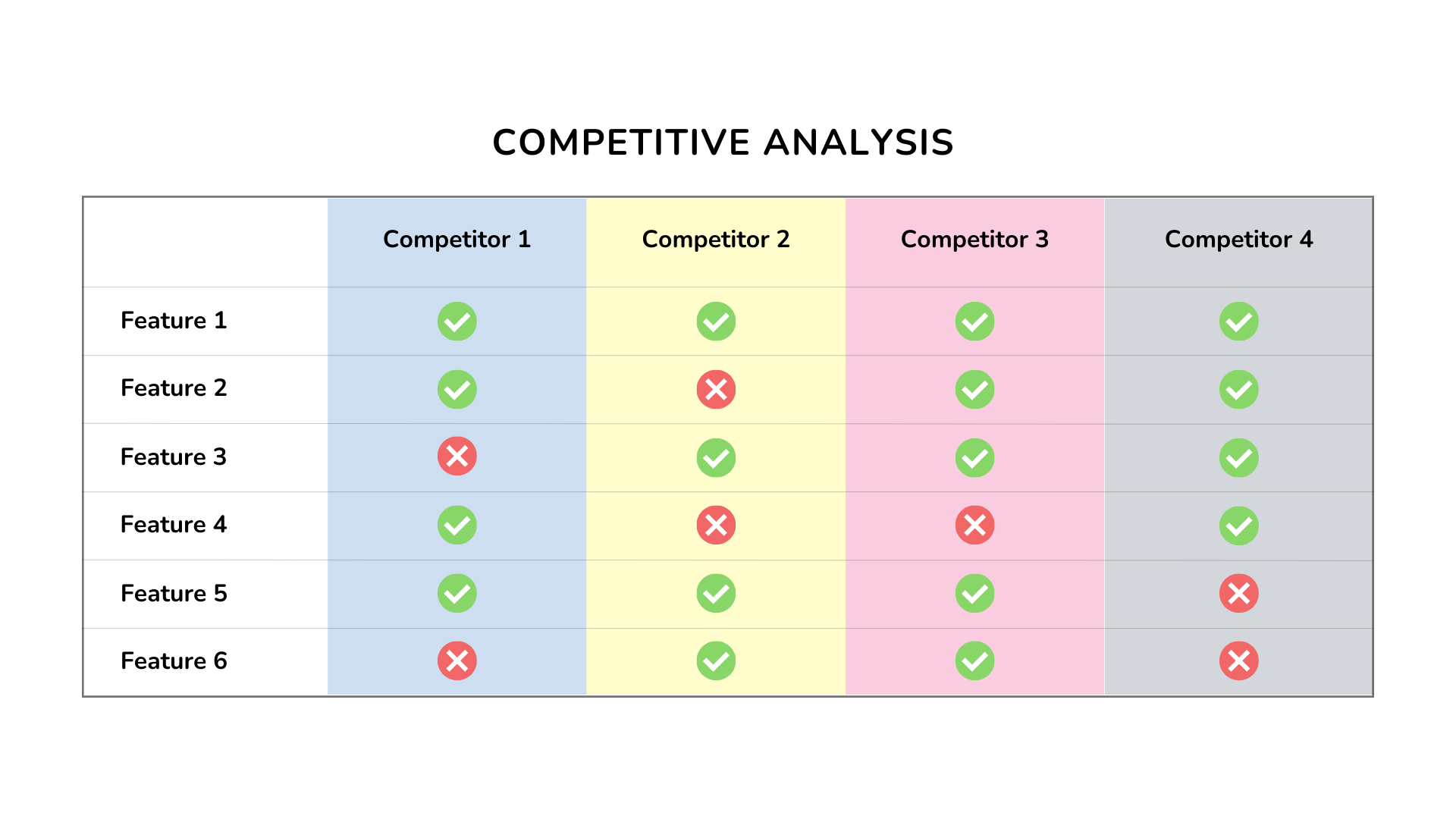
Features Analysis Template
Analyzes the features and functionalities of competitors' products or services. Use it for product/service differentiation.
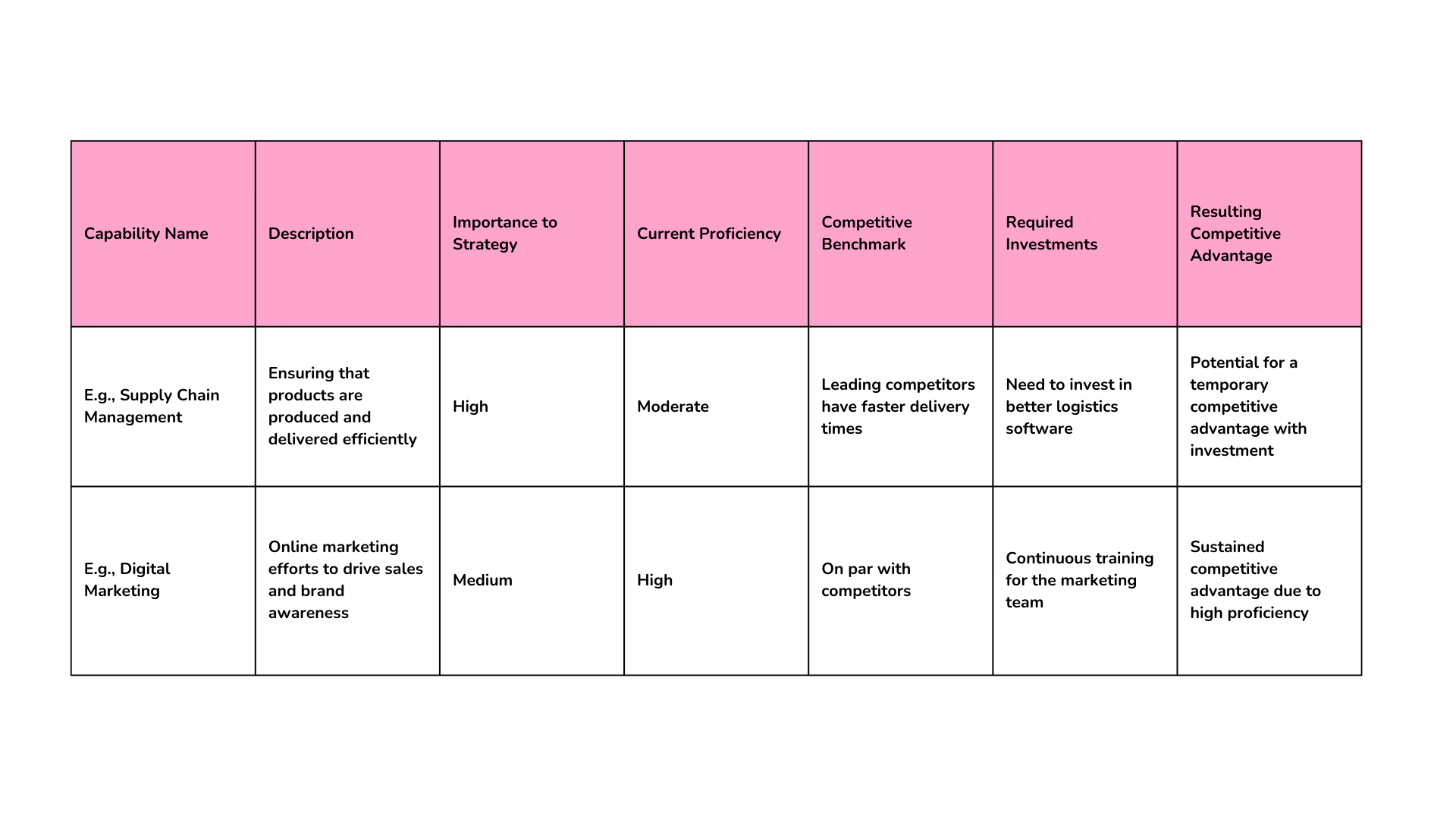
Imitability Analysis Template
Evaluates the extent to which competitors' strategies and resources can be imitated or replicated. Use it when assessing the sustainability of your competitors' advantages.

Competitive Analysis Chart Template
Creates visual charts to represent competitor data, making it easier to spot trends and patterns. Choose a benchmark and compare how your competitors are performing on this metric over time. Here is an example from Competitor App Benchmark Feature.
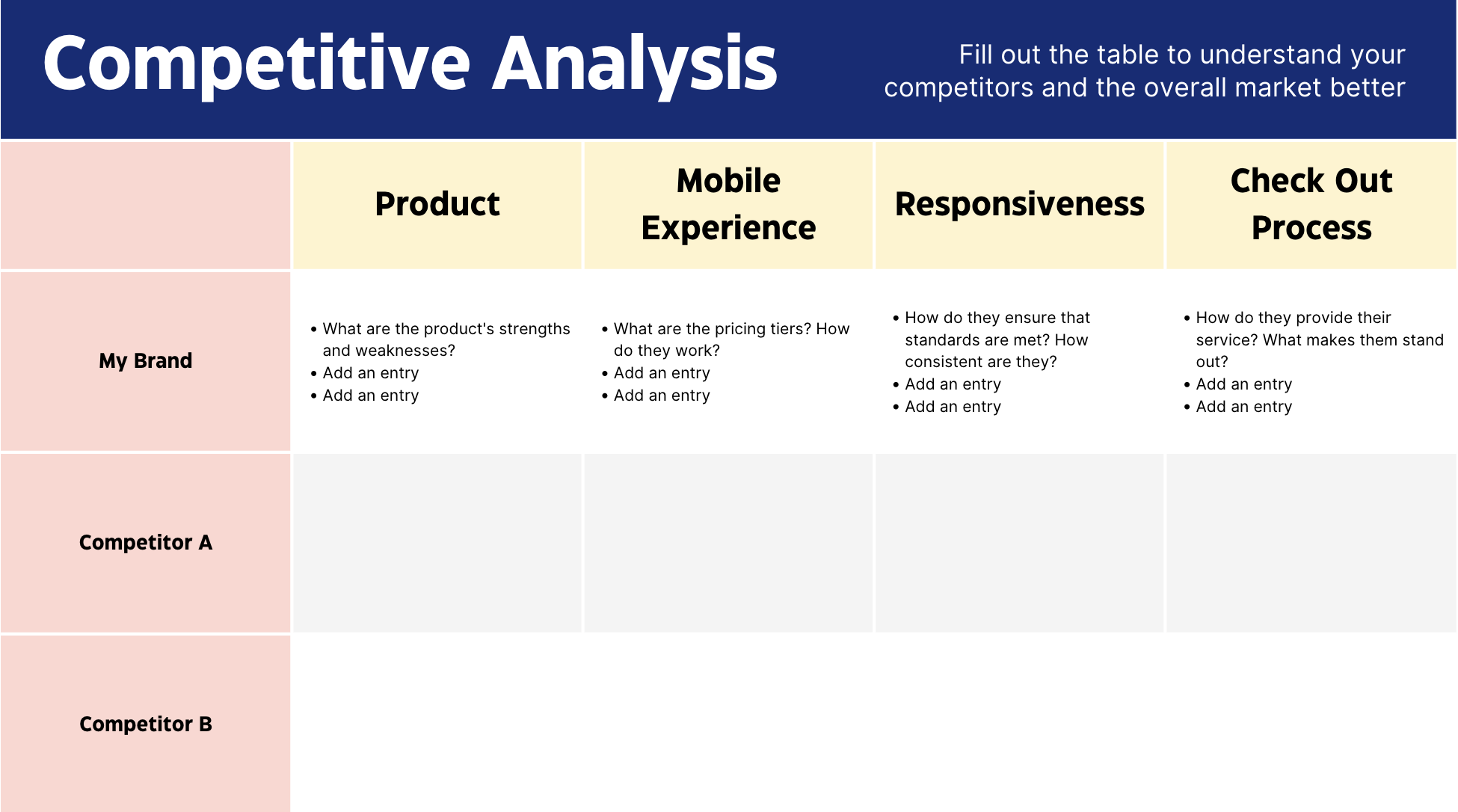
UX Competitor Analysis Template
This template helps you assess the user experience (UX) of your competitors' products or websites and improve your own UX.

Competitive Differentiation Analysis Template
Use this template to identify what sets your business apart from competitors and strengthen your market position.

Product Competitive Analysis Template
The product competitive analysis template allows you to compare your products with those of your competitors, focusing on features, pricing, and performance. This template is essential for product managers and marketing teams.

Competitive Analysis Report
Use this template to identify what sets your business apart from competitors and strengthen your market position.

Competitive Audit Template
Conduct a thorough audit of your competitors' strengths and weaknesses with this detailed template. It covers various aspects, including marketing strategies, product features, and customer satisfaction.

7P Competitive Analysis Template
Analyze your competitors based on the 7Ps: Product, Price, Place, Promotion, People, Process, and Physical evidence. This template is particularly useful for service-based industries.

Competitive Matrix Template
The competitive matrix template helps you compare competitors across multiple criteria, such as market share, product features, and pricing.

Competitor Research Template
This template guides you through the process of gathering and organizing data on your competitors, making your research more efficient and effective.

PEST Competitive Analysis
The PEST analysis template evaluates Political, Economic, Social, and Technological factors affecting your competitors. It provides a broader context for understanding the competitive landscape.

Competitor Assessment Template
Conduct a detailed assessment of your competitors' strengths and weaknesses with this comprehensive template.

Comparative Analysis Template
Compare multiple competitors side by side using this template. It’s ideal for identifying relative strengths and weaknesses.

Marketing Competitive Analysis Template
Focus on your competitors' marketing strategies with this template. It covers advertising, social media, content marketing, and more.
Free Competitor Analysis Templates For Digital Channels
When it comes to analyzing your competitors in the digital realm, specific templates tailored to various online platforms become invaluable. These templates provide a focused approach to understanding your competition within the digital landscape. Whether you’re delving into social media strategies, assessing website performance, or diving deep into SEO tactics, these templates streamline the process and offer a clear framework for your analysis. Let’s explore these templates further to harness the power of digital insights.
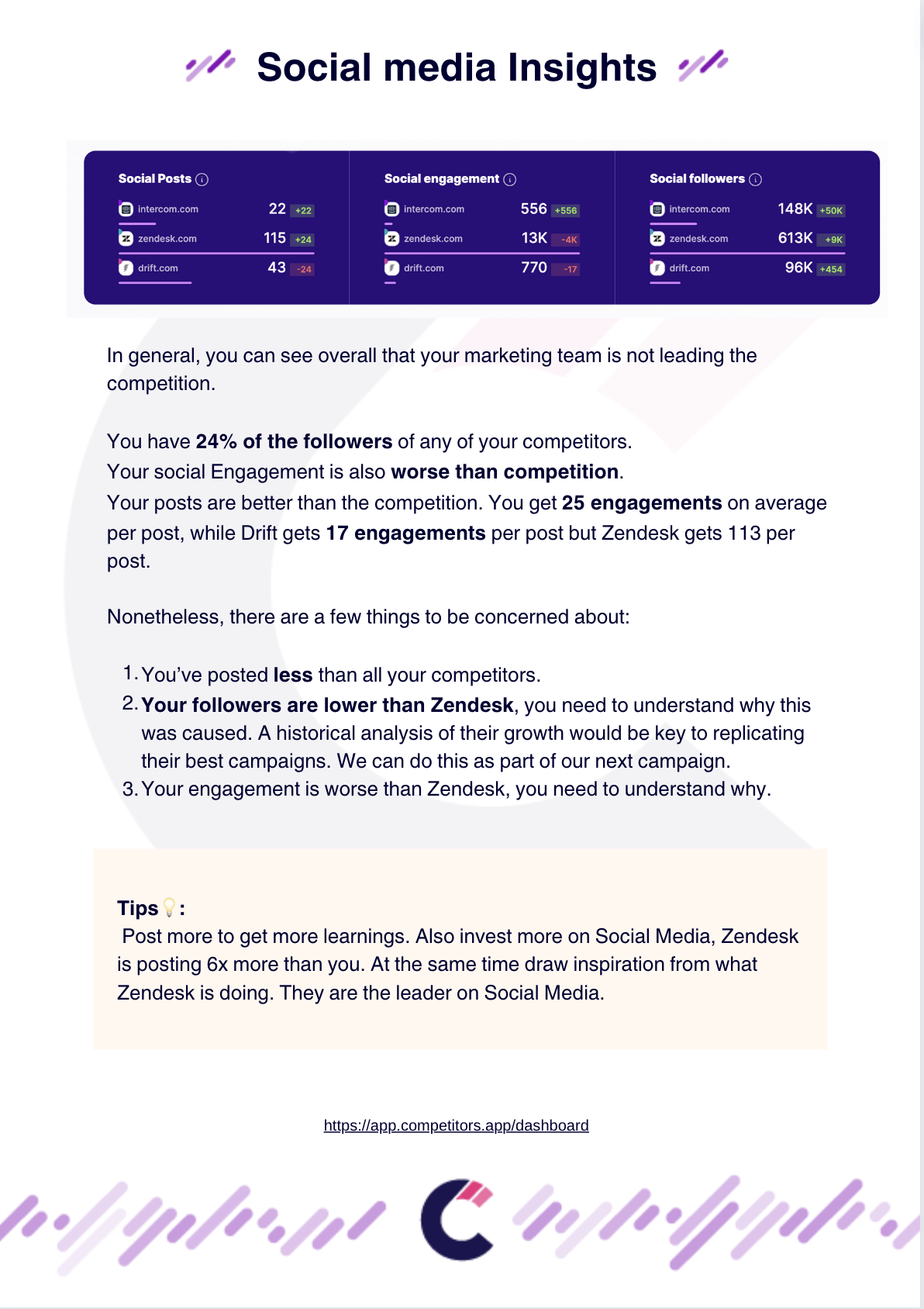
Online Social Media Analysis Template
Analyze your competitors' social media presence and strategies to gain an edge in the online conversation.
Download the template
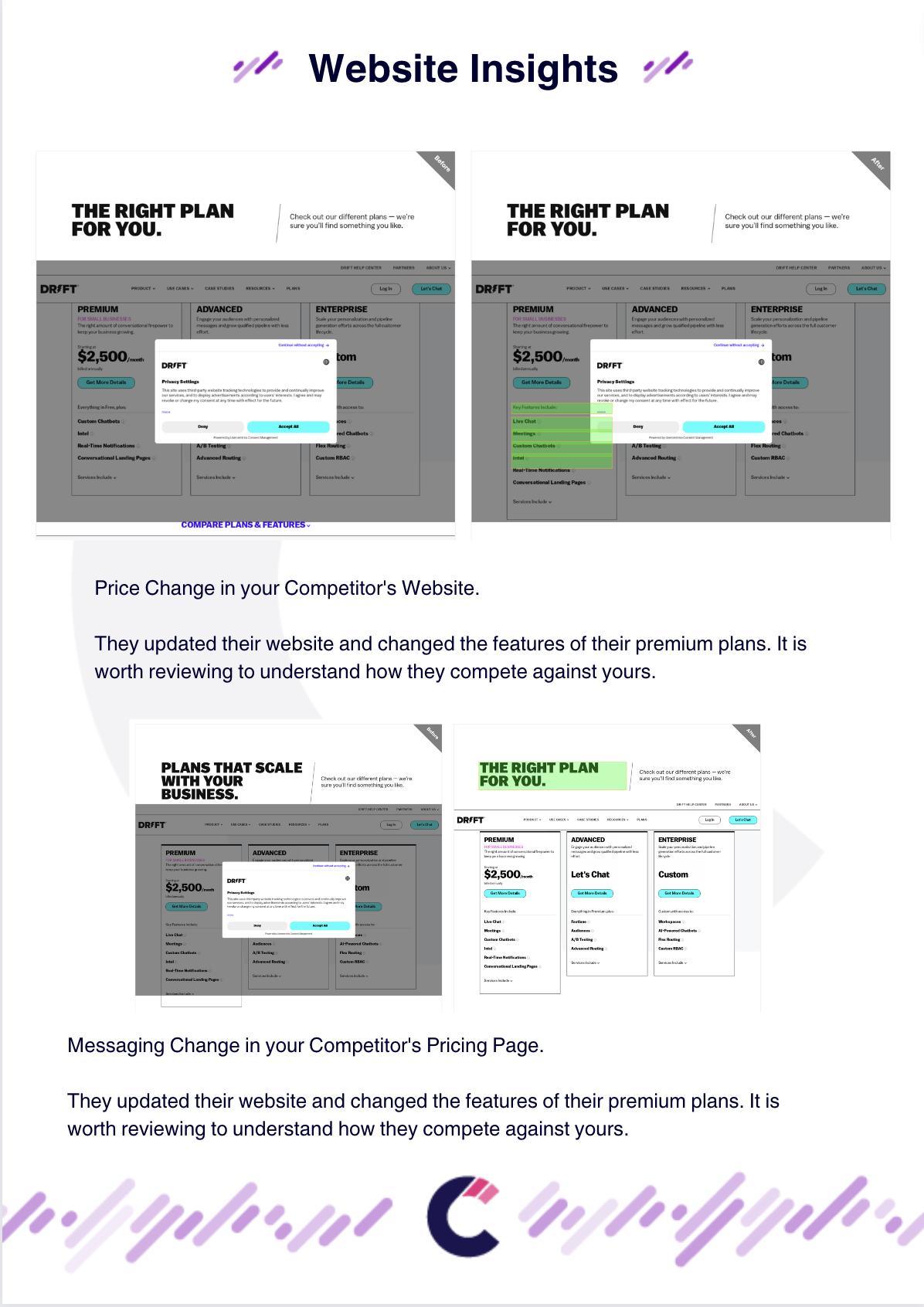
Website Competitor Analysis Template
Dive into the world of websites to dissect your rivals' digital footprints and discover opportunities for improvement.
Download the template
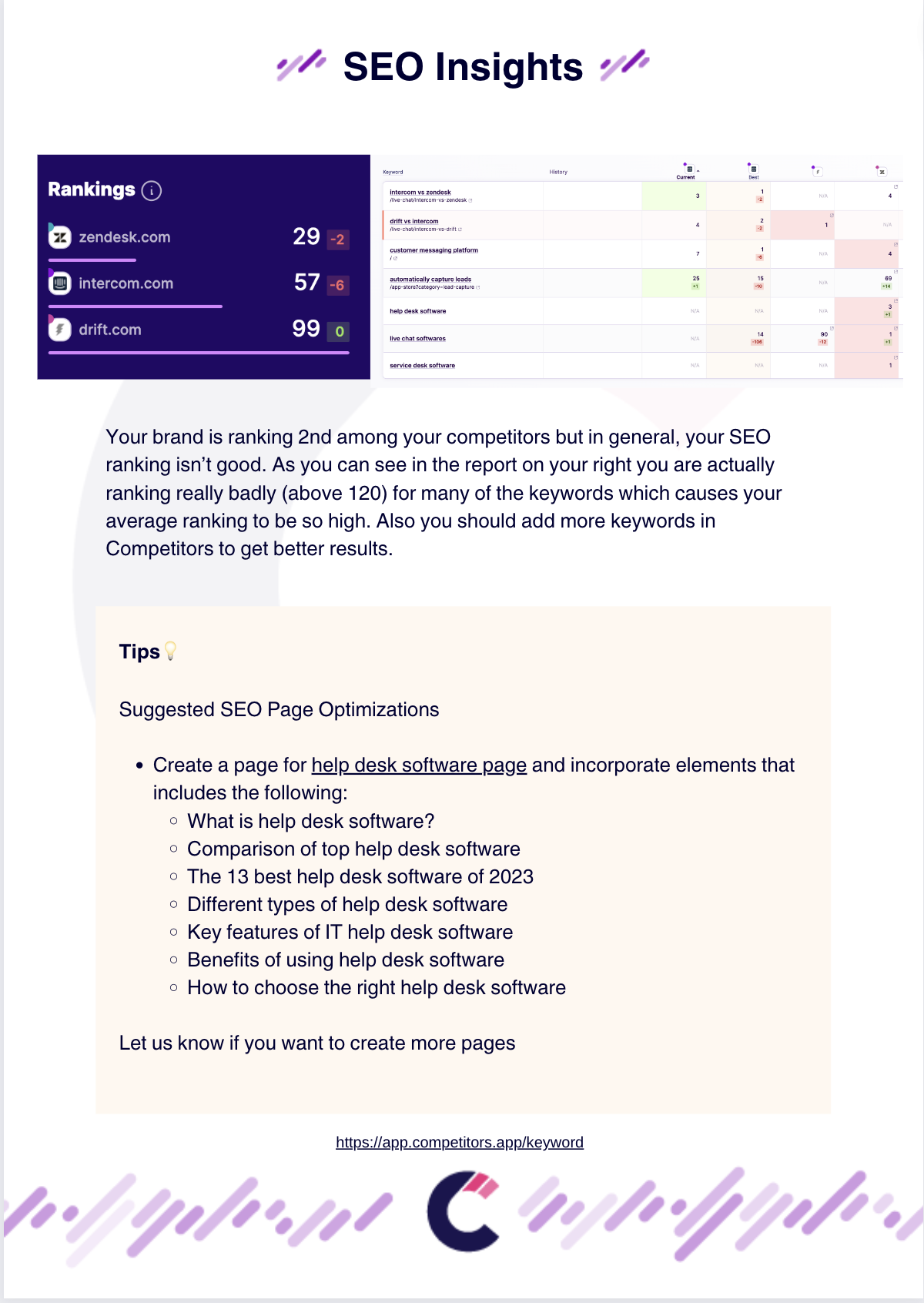
SEO Competitor Analysis Template
Uncover the secrets of your competitors' SEO strategies and optimize your own to dominate search engine rankings.
Download the template
Sample Competitor Analysis Template in Powerpoint, Word and Excel
Let’s admit it – not everyone is well-versed in using templates and ever further not everyone in your audience can understand them. This is why some professionals find it more comfortable to work with familiar software like Microsoft Word, PowerPoint, or Excel. For this reason, we’ve made it even easier for you to access and utilize competitor analysis templates. We offer examples of templates specially designed for Word, Excel, and PowerPoint. These formats cater to a wide range of preferences, ensuring that whether you’re a visual storyteller, a data enthusiast, or a document aficionado, you can effortlessly incorporate competitor analysis into your daily workflow. Below, you’ll find downloadable examples of competitive analysis templates tailored to these popular office tools, making it simple for you to get started.

Competitor Analysis Template for Powerpoint (ppt)
For those who thrive on visually compelling presentations, our Competitor Analysis Template for PowerPoint (ppt) is your go-to choice. Crafted with an emphasis on clear visuals it's perfect for showcasing your competitive insights to your team or stakeholders.

Competitor Analysis Template for Excel or Google Sheets
If you prefer a more structured and data-centric approach, our Competitor Analysis Template for Excel or Google Sheets is an ideal pick. This will help you crunch the numbers, analyze data trends, and gain a deeper understanding of your competition's strengths and weaknesses.
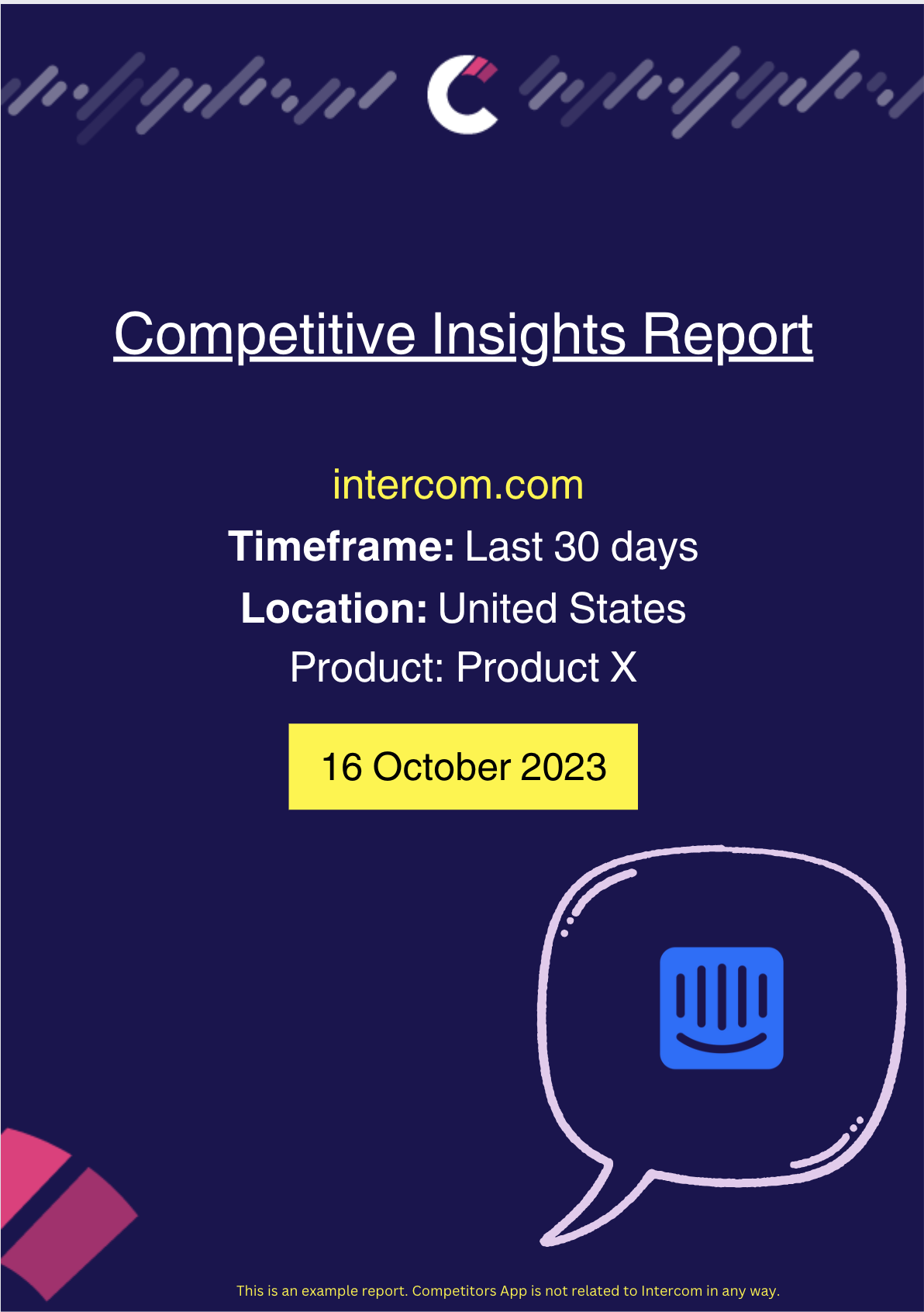
Competitor Analysis Tempalte for Word or PDF
Forr those who value well-structured reports, our Competitor Analysis Template for Word or Google Docs is a perfect fit. This template provides a professional framework to document your competitive analysis findings and share them seamlessly within your organization.
The Benefits of a Competitor Analysis Template
Using a competitive analysis template offers several advantages, making the research process more efficient and effective. Here are five key benefits:
- Ensures Consistency and Thoroughness
A competitor analysis template standardizes the data collection process, ensuring that every aspect of competitor evaluation is covered. This consistency helps prevent important details from being overlooked and ensures that the analysis is thorough and comprehensive across all competitors.
- Identifies Market Trends
By systematically collecting and analyzing data, a template helps identify emerging trends and shifts in the market. Understanding these trends enables businesses to anticipate changes, adapt their strategies accordingly, and stay ahead of the competition.
- Discovers New Opportunities
Templates highlight gaps in the market and areas where competitors may be underperforming. By identifying these opportunities, businesses can develop new products or services, optimize their offerings, and better meet customer needs, giving them a competitive edge.
- Informs Strategic Decisions
A well-structured analysis provides valuable insights into competitors’ strengths and weaknesses. This information helps businesses make informed strategic decisions, such as adjusting marketing strategies, pricing models, and product development plans to improve their market position.
- Saves Time and Effort
Using a pre-designed template streamlines the data collection and analysis process, saving significant time and effort. Businesses can focus on analyzing the data and developing strategies rather than creating the framework from scratch, leading to more efficient and effective competitor analysis.
How to use the competitive analysis template
In this section, we’ll explore how to effectively utilize a competitive analysis template to gather, organize, and apply crucial insights about your competitors. Whether you’re a seasoned strategist or new to the world of competitive analysis, these steps will guide you:
1. Define Your Objectives: Start by clarifying your goals for the analysis. What specific insights are you seeking? Are you focusing on pricing, product features, or market positioning? Clearly defined objectives ensure your analysis stays on track.
2. Gather Data: Collect information about your competitors. This includes their products or services, pricing, marketing strategies, target audience, customer reviews, and any other relevant details. Research both online and offline sources to compile a comprehensive dataset.
3. Select Your Competitors: Determine which competitors you’ll analyze. Depending on your objectives, you may want to focus on direct competitors who offer similar products or broader industry players. List them in your template for easy reference.
4. Use the Template: Input the gathered data into the template’s sections relevant to your objectives. Most templates offer organized sections for various aspects of analysis, such as strengths, weaknesses, opportunities, and threats (SWOT), pricing, marketing channels, and more.
5. Analyze and Compare: Once the data is in the template, perform a detailed analysis. Compare your findings across competitors to identify trends, patterns, and areas of differentiation. Pay close attention to where your business excels and where improvements are needed.
6. Draw Conclusions: Based on your analysis, draw conclusions and insights. What does the data reveal about your position in the market? Are there untapped opportunities or potential threats? Use these insights to inform your strategic decisions
7. Implement Strategies: With a clear understanding of your competitive landscape, develop strategies and action plans. Leverage your strengths, address weaknesses, and capitalize on opportunities to gain a competitive advantage.
8. Monitor and Update: Competitive analysis is an ongoing process. Regularly revisit and update your template as the market evolves. New competitors may emerge, and existing ones may change strategies. Staying vigilant keeps you ahead in the competition.
What to Include in a Competitor Analysis Template
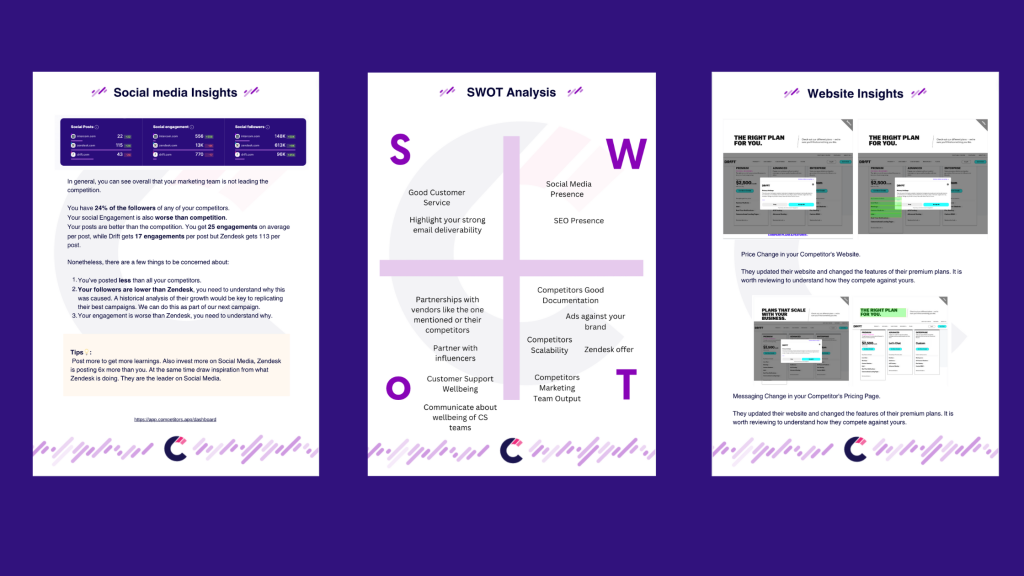
A well-constructed Competitive Analysis template comprises several essential components, each serving a specific purpose in gaining comprehensive insights into your competitors:
Date of the report: Although obvious this is many times missed. When you are creating a competitive analysis template include the timespan the analysis took place.
Competitor Overview: This section provides a snapshot of the competitor landscape, including their names, industry, and key players within the organization.
SWOT Analysis: A SWOT (Strengths, Weaknesses, Opportunities, Threats) analysis dissects the internal and external factors influencing a competitor. It uncovers their advantages, vulnerabilities, potential growth areas, and external threats.
Competitive Landscape: This segment offers a visual representation of the competitive environment, illustrating the positioning of various competitors relative to your own business.
Market Share Analysis: Examining market share data helps you understand the competitor’s market presence and identify areas where you can gain an advantage.
Product Analysis: This component focuses on the competitor’s product or service offerings, detailing their features, pricing, and unique selling points.
Marketing Strategy: Understanding how competitors promote their products or services, including their advertising channels, content strategy, and messaging, can inform your own marketing efforts.
Customer Reviews and Feedback: Analyzing customer reviews and feedback sheds light on the competitor’s reputation, customer satisfaction levels, and areas for improvement.
Financial Analysis: Evaluating financial data, such as revenue, profit margins, and growth trends, provides insights into the competitor’s financial health and stability.
Keyword and SEO Analysis: Exploring keywords and SEO strategies reveals how competitors optimize their online presence and what keywords are driving organic traffic to their websites.
Social Media Presence: Assessing a competitor’s social media presence, including follower count, engagement metrics, and content strategy, can inform your social media strategy.
Website Traffic and User Experience: Examining website traffic data and user experience metrics helps identify areas where competitors excel or fall short in their online presence.
Innovation and Technology: Keeping an eye on a competitor’s technological advancements and innovations can highlight potential areas for improvement or partnerships.
How to Find Competitor Insights to Include in a Competitive Analysis Template
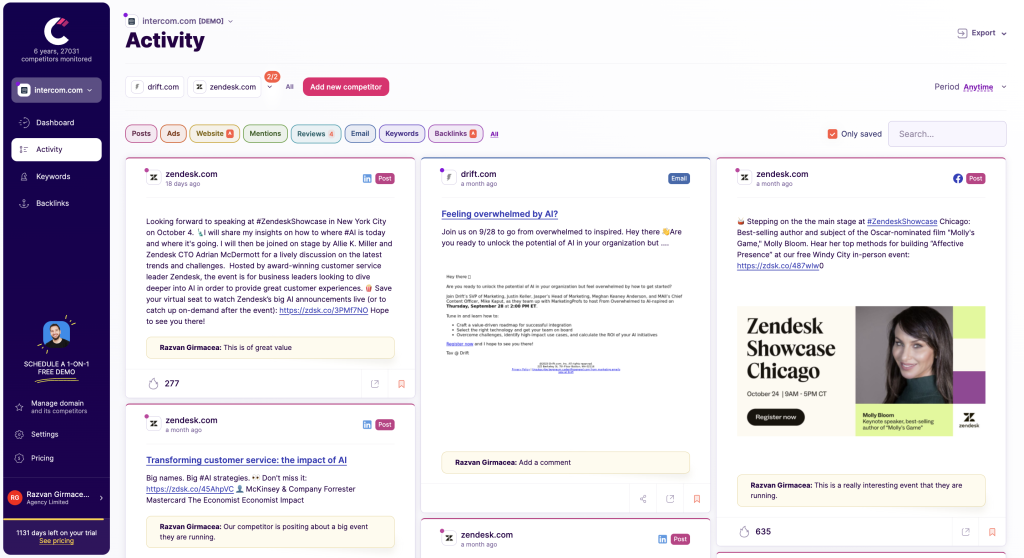
When it comes to competitor analysis, having the right templates in your toolkit is essential. They will provide structure and organization, helping you extract valuable insights from competitor data. To supercharge your competitive edge, it’s crucial not only to use these templates but also to gather data efficiently. This is where Competitors App comes into play. By using Competitors App, you can effortlessly collect and manage competitor data, making it easier than ever to populate these templates with the insights you need to stay ahead of the competition. Don’t miss out on this opportunity—start using Competitors App today and take your competitor analysis to the next level.
Best Practices for Creating an Effective Competitor Analysis Template
A good competitive analysis template should:
1. Be Comprehensive: It should cover a wide range of factors, from market trends to competitor strengths and weaknesses.
2. Facilitate Data Organization: The template should provide a structured format for organizing data, ensuring nothing gets overlooked.
3. Adaptability: It should be flexible enough to accommodate different industries and business models.
4. Visual Elements: Incorporating visuals like charts and graphs can make complex data more digestible.
5. Ease of Use: Users should find it intuitive and straightforward, making the analysis process efficient.
6. Promote Collaboration: If multiple team members are involved, the template should support collaboration.
How to present competitor analysis template data
After diligently collecting data using competitive analysis templates, the next crucial step is presenting these insights effectively. Utilizing templates for PowerPoint, Excel, or other formats can greatly assist in presenting your findings. However, it’s essential to follow some key principles to ensure your presentation is impactful.
Clarity: When presenting your competitive analysis, aim for clarity above all else. Imagine you’re sharing this information with someone who is unfamiliar with the industry or your business. Use straightforward language, avoid jargon, and explain any technical terms. For example, instead of saying, “Our organic CTR outperforms the industry average,” you could say, “More people click on our search engine results compared to our competitors.”
Relevance: Not all data is equally important. Focus on highlighting insights that directly impact your strategy. For instance, if you’re analyzing social media engagement, emphasize metrics like shares and comments, as these can provide valuable insights into what resonates with your audience. Avoid overwhelming your audience with too much data; stick to the most relevant points.
Visual Appeal: Visuals can significantly enhance the presentation of your competitive analysis. Consider using bar charts, line graphs, or pie charts to illustrate key findings. For instance, a bar chart comparing your market share with competitors can make the data more accessible. Ensure that the visuals are easy to read and interpret, even for those who may not be data-savvy.
Brevity: Your audience’s attention span is limited, so aim for brevity in your presentation. Focus on conveying the essential points succinctly. For example, if you’re discussing website traffic, you might say, “Our website received 20% more visitors than our closest competitor last quarter, indicating strong user interest.” Avoid lengthy explanations and prioritize delivering the message efficiently.
Conclusion & Final Thoughts
Incorporating a competitive analysis template into your business strategy can significantly enhance your understanding of the competitive landscape. These templates streamline the research process, ensure thoroughness, and provide a structured approach to gathering and analyzing data. By identifying market trends, discovering new opportunities, and making informed strategic decisions, you can maintain a competitive edge. Regularly updating your analysis ensures you stay ahead of market changes, allowing you to continuously refine and optimize your strategies. Embrace these tools to boost your business success and outperform your competitors.
FAQS
1. How do you write a competitor analysis?
Writing a competitor analysis involves researching your competitors, gathering relevant data, and analyzing their strengths and weaknesses. Use a structured template to organize your findings and present them clearly.
2. What is an example of competitive analysis?
An example of competitive analysis involves researching and analyzing a specific aspect of a competitor's business, such as their pricing strategy, product features, or online presence. For instance, a company might analyze a competitor's website to understand their user experience, layout, and content. By comparing this information with their own website, they can identify areas for improvement or opportunities to differentiate themselves.
3. How to make competitive analysis with a template?
Running a competitive analysis with a template involves several steps:
- Identify Competitors: List the competitors you want to analyze.
- Gather Data: Collect data on each competitor in the categories defined in your template.
- Analyze Data: Assess the collected data to identify patterns, strengths, weaknesses, and opportunities.
- Compare Competitors: Compare your business's performance and strategies with those of your competitors.
- Draw Insights: Use the analysis to derive actionable insights for improving your business strategies.
- Implement Changes: Apply the insights gained to enhance your products, services, marketing, or overall strategy.
- Monitor and Iterate: Regularly update your competitive analysis and adjust your strategies as the competitive landscape evolves.
4. What are the 5 steps to analyse your competitor?
- Identify your competitors
- Gather data on their strategies
- Analyze their strengths and weaknesses
- Compare their performance to yours
- Use the insights to inform your strategy
5. What’s the difference between a market analysis and competitive analysis template?
A market analysis focuses on understanding the overall industry or market in which a business operates. It examines factors like market size, growth trends, customer demographics, and demand. In contrast, a competitive analysis template delves deeper into the specific competitors within that market. It assesses how individual competitors position themselves, their strengths and weaknesses, and their strategies for gaining market share.
6. How Often Should You Do a Competitor Analysis?
Competitor analysis should be conducted regularly, at least annually, to stay updated on market changes and maintain a competitive edge.
